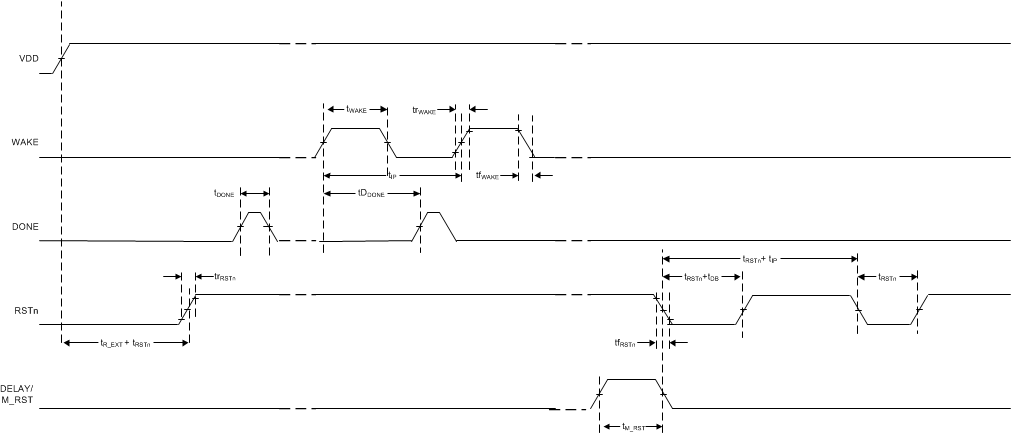ZHCSEK6A January 2015 – September 2018 TPL5010
PRODUCTION DATA.
- 1 特性
- 2 应用
- 3 说明
- 4 修订历史记录
- 5 器件比较表
- 6 Pin Configuration and Functions
- 7 Specifications
- 8 Detailed Description
- 9 Application and Implementation
- 10Power Supply Recommendations
- 11Layout
- 12器件和文档支持
- 13机械、封装和可订购信息
7.6 Timing Requirements
| MIN(3) | NOM(4) | MAX(3) | UNIT | ||||
|---|---|---|---|---|---|---|---|
| trRSTn | Rise Time RSTn (2) | Capacitive load 50 pF, Rpullup 100 kΩ | 11 | µs | |||
| tfRSTn | Fall Time RSTn (2) | Capacitive load 50 pF, Rpullup 100 kΩ | 50 | ns | |||
| trWAKE | Rise Time WAKE (2) | Capacitive load 50 pF | 50 | ns | |||
| tfWAKE | Fall Time WAKE (2) | Capacitive load 50 pF | 50 | ns | |||
| tDDONE | DONE to RSTn or WAKE to DONE delay | Minimum delay(1) | 100 | ns | |||
| Maximum delay (1) | tIP-20ms | ms | |||||
| tM_RST | Valid Manual Reset | Observation time 30 ms | 20 | ms | |||
| tDB | De-bounce Manual Reset | 20 | ms | ||||
(1) In case of RSTn from its falling edge, or in case of WAKE from its rising edge.
(2) This parameter is specified by design and/or characterization and is not tested in production.
(3) Limits are specified by testing, design, or statistical analysis at 25°C. Limits over the operating temperature range are specified through correlations using statistical quality control (SQC) method.
(4) Typical values represent the most likely parametric norm as determined at the time of characterization. Actual typical values may vary over time and will also depend on the application and configuration. The typical values are not tested and are not specified on shipped production material.
 Figure 1. TPL5010 Timing
Figure 1. TPL5010 Timing